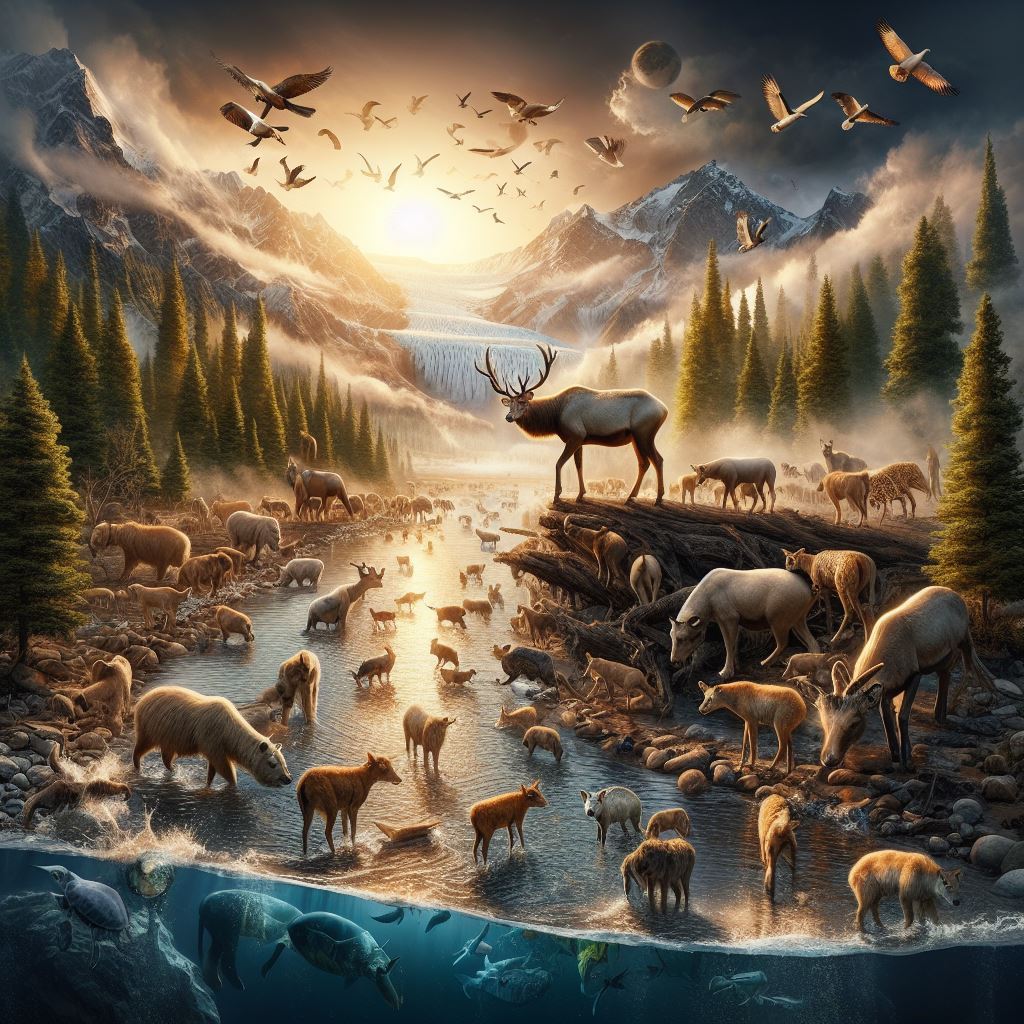The future of wildlife in Pakistan is dependent on how well the country can address the various threats and challenges to its biodiversity.
The future of wildlife in Pakistan is dependent on how well the country can address the various threats and challenges to its biodiversity. According to WWF-Pakistan, climate change is a major challenge confronting wildlife, as it damages their habitat, reduces food availability, causes migration, and is likely to lead to the disappearance of various wild species in the country.
Other factors that contribute to the decline in wildlife include illegal wildlife trade and hunting, human-wildlife conflict, unsustainable development, habitat loss and encroachment, and water pollution.
Pakistan’s rich biodiversity includes many endemic and endangered species. However, climate change, illegal wildlife trade, and hunting are threatening the survival of these animals.
Pakistan must take practical steps to assess the impact of climate change on wildlife, improve the management and protection of its protected areas, and implement stronger regulations against illegal wildlife trade. Encouraging public awareness and influencing consumer choices that demand wildlife products can also help.
Pakistan has enjoyed successful conservation efforts that have significantly improved the habitats of endangered wildlife species. These efforts have been spearheaded by coordinated and community-led initiatives.
Notably, the population of the Indus River dolphin has nearly doubled over the past twenty years, a result of the tireless efforts of the Sindh Wildlife Department, WWF-Pakistan, and local fisher communities. Additionally, the snow leopard population in northern Pakistan has shown promising signs of recovery, thanks to the combined efforts of NGOs, government agencies, and local communities.
Wildlife in Pakistan needs urgent action & collaboration to thrive. It provides numerous benefits like food security, tourism, cultural values & scientific knowledge. Let’s reverse the loss of natural resources & create a prosperous future for wildlife & people.
Wildlife studies play a crucial role in comprehending, safeguarding, and preserving the multitude of life on our planet. There are two categories of wildlife studies: long-term and short-term. Long-term studies meticulously observe and scrutinize the biology, ecology, and evolution of species over several decades, identifying conservation units.
The Institute for Wildlife Studies’ endeavors on the bald eagle and island fox are exemplary instances of long-term studies. Short-term studies are more focused and specific, usually lasting up to two years. These studies can cover a variety of topics and species, such as monitoring animal movements, assessing the impacts of climate change or human activities on wildlife, researching the predators or prey of endangered species, or using remote camera systems to study animal behavior.
Short-term wildlife studies can include surveys that determine the distribution and abundance of wildlife species in different habitats. These surveys can provide baseline data for management and conservation purposes.
An example of a short-term wildlife study is the work done by Springer on wildlife population genomics. This study uses high-throughput sequencing to investigate the genetic diversity and adaptation of wildlife species.
The field of wildlife studies is full of exciting possibilities as researchers continue to develop new technologies and methods to tackle a range of conservation issues. Collaborations with experts in economics, sociology, and public health can also bring valuable insights to wildlife studies. By advancing scientific knowledge and promoting human well-being and environmental sustainability, wildlife studies have the potential to make a real difference.
If you are interested in pursuing a career in this field, you will typically need a bachelor’s degree in biology, zoology, ecology, or a related area. Advanced positions may require a master’s or doctoral degree.
According to the U.S. Bureau of Labor Statistics, employment in this field is expected to grow by 3 percent from 2022 to 2032, roughly in line with the average for all occupations. As of May 2020, the median annual wage for zoologists and wildlife biologists was $66,350 which is likely to increase.
It is significant if someone shows interest in promoting a wildlife degree program in Sindh, Pakistan. The field of wildlife is both fascinating and crucial for the conservation of Pakistan’s rich biodiversity and natural resources.
According to various sources, the wildlife of Pakistan comprises a diverse flora and fauna in a wide range of habitats from sea level to high elevation areas in the mountains, including 195 mammals, 668 bird species, and more than 5000 species of Invertebrates.
Sindh province, where you are located, has a semi-arid climate and supports a large and varied wildlife population, including the endangered Indus River dolphin, the rare leopard, the olive ridley turtle, and many other species.
If you want to pursue a wildlife degree in Sindh Pakistan, you might want to check out the Pakistan Wildlife Foundation, which offers a wide range of short courses in wildlife-related fields through distance learning. Each course is 3 months duration including a written test, a viva voce examination, and a one-day orientation workshop and field activities. You can also look for other universities or institutes that offer wildlife or environmental sciences programs in your area.
If you want to promote a wildlife degree in Sindh, Pakistan, you may need to create awareness about the significance and benefits of wildlife conservation among your community and peers.
Additionally, you can use social media platforms, blogs, podcasts, or videos to spread your message and inspire others to join your cause. Also, you can collaborate with other organizations or individuals who share your passion and vision for wildlife protection.
To support wildlife conservation in Sindh, Pakistan, you can also volunteer, donate, adopt, sponsor, or participate in citizen science projects. Some areas that need help include Kirthar National Park, the Indus River Delta, and the Rann of Kutch. But this all is not fashionable, one needs to be serious and sincere in approach.
In Sindh, in public sector universities, there is not even a single university offering a degree in wildlife. However, recently, Shaheed Benazir Bhutto University of Veterinary and Animal Sciences has introduced a BS degree in wildlife management which certainly is a way forward to promote wildlife education in Pakistan.
